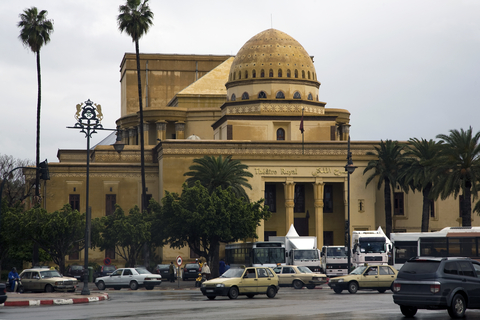Most, if not all, of us love to discover something new, something that is unfamiliar to us. Maybe we don’t always want it to become a permanent feature of our lives, but we are all curious and we want to discover something unknown. One of the best ways of getting away from the monotonous humdrum of our lives and forgetting about our usual daily routine is to travel and visit places we may not be familiar with.

Travelling is an opportunity to experience that which we may not normally be aware of. We get the opportunity to discover unfamiliar landscapes, the mysteries of distinct cultures, and relish the pleasures and challenges of foreign lifestyles and people.
More often than not, we want to bring home some piece of our adventures back with us. Whether it is in an attempt to relive the exoticism, remind ourselves of the people we met, share our discoveries with friends or families, make a record of the sights we were struck by, or the hope of earning some extra cash, we all invariably take pictures when travelling.
Capturing Your Travels in Images
Travel photography is arguably the most complex and challenging of all photographic genres. It spans across street photography, food photography, landscapes, portraits, cityscapes, wildlife, nature… Just the variety of landscapes encompasses a huge breadth of subjects and challenges: beaches, mountains, fields, prairies… The sheer diversity of subject matter presents both challenges and opportunities to improve our photographic skills.
From the simple and clichéd snapshots of your travelling companion pretending to hold up the Leaning Tower of Pisa to a haunting image of a poor street urchin’s eyes as they search for food on a garbage heap, the pictures we make when on our journeys are always an attempt to convey a sense of the place where we were. Places have their own ambience, charm, look or appearance.
Our photographs need to convey a sense of what makes a place unique, the quality that attracted us to the location in the first place and of course the reason that we raised the camera and took a photograph.
Travel photography is not something that can be undertaken in the relative safety of a studio, nor do we always have the luxury of waiting for the perfect conditions. Most of us are constrained by the time we can spend at our exotic locations while travelling as we are often constrained by inflexible itineraries that impose considerable boundaries on what we can do and when we can do it.
But these same challenges can help to propel us further and help improve our photographic techniques by searching for solutions to the problems we face. Conventional photographic wisdom may say that in photography the high, harsh midday sun is like a lit match in a shed full of fireworks, but if you only have 2 hours at a particular location and it is your only chance to capture it, you will need to figure out a way to do it.
The first and most important rule to remember in travel photography is: good pictures are not going to come to you by themselves. You need to get out in the field. It may be tempting to escape the scorching heat on the streets of Marrakech or Athens by staying in your air conditioned hotel room or dipping in the hotel pool, but that just means that if you do take any pictures it is only to record what your hotel bill was all about.
Spending all your time in the hotel only prevents you from making any photographs worth showing to anyone. Even if you cannot get make the photographs you want because of the conditions you can use the time to soak up the atmosphere and scope out your surroundings to find inspiration and ideas on what to photograph when the conditions are right. So get out there and perhaps suffer a little inconvenience, but after all, part of the magic of travelling is to get out of your comfort zone and experience a different life and perhaps even have a little adventure.
Planning Makes Your Photographic Adventures Worthwhile
Adventure doesn’t mean that you should be unprepared. Chances are when you decide to go somewhere you would have done a minimum amount of research: what is the weather usually like during the time you want to visit, the location of your hotel and the amenities it offers, if anything interesting like music or street festivals that you may want to visit are taking place.
Take the research a bit further: look at travel books and brochures, pick up some tourist information at the country’s embassy, browse through books about the place, look through magazines that may have done features on the place you want to go to. If your schedule on location will not allow for much flexibility, the research will prove invaluable as you will already have a fairly good idea of the things you want to photograph, and the messages you want your images to convey.
This will not only allow you to draw up your itinerary in advance to suit your “narrative” but will also help you avoid dithering and wasting time once at your location.

If you are interested in trying to sell your pictures study images related to your destination on agency websites. What have others photographed where you are going? What is of interest? Check to see what some of the more popular subjects are and how many pictures there are of those. Analyze the pictures in terms of composition and lighting and think about what you may be able to do differently.
What compositions or angles have been used? Try and figure at what time of day the photograph was taken. How does the light render the subject? What feeling or concept is evoked? Agencies may be reluctant to accept more pictures of well covered items unless yours are of exceptional quality or bring something new or different to the subject. Take the opportunity to ask yourself if you could use a different angle, or perhaps whether photographing the subject at a different time of day or in different conditions will convey a distinct message or feeling.
The equipment you should take with you depends entirely on what you intend to make photographs of. If you are primarily interested in landscapes, pack a good wide angle lens. If you think portraits or details will help convey the sense of a place and a culture, take a good telephoto lens. If you intend to shoot indoors or in the evenings, take a simple lightweight tripod with you.
There is no worse feeling than arriving home and finding an otherwise wonderful shot is ruined by camera shake. Unless you have already made a fortune and can afford to take another trip just for the picture it is unlikely that you will be able to return for another attempt.
If you think you are going to walk a lot, taking a compact camera is probably a good idea for the times when you are just too tired lug around your heavy camera bag with the SLR’s and lenses. It’s more important to be able to capture something interesting that you stumble across with a mediocre camera than to lose the opportunity because your best is too heavy to carry with you 24/7.
If you are intending to sell your images, it may be be a good idea to take a reasonable number of model releases with you as well. You may even want to get your model release translated into the local language if possible. You may not be able to use the translated version with your agency, but it will help the locals understand what your intentions are and they will almost certainly appreciate your efforts.
Pack a few batteries for the camera and don’t forget charging units. Take plenty of decent sized memory cards and if possible also take a small lightweight computer with you. This will let you review your pictures at the end of the day to see how you are doing and even help inspire some new ideas while on location to try out. Even more important this will allow you to make backups of your pictures in case something horrible happens to your cards or camera.
Something that you may want to check out if you are taking really expensive kit with you on your journey is insurance. Things may go perfectly and you may not need to avail yourself of the insurance, but horrible things can happen and you may end up being grateful that you had made arrangements to fall back on. In the end it really depends how paranoid and risk averse you are.
Once on location, you should do some additional research. Check out the postcards in the hotel lobby or in kiosks to get an idea of what is considered as worthy subjects. Take a walk to scope out potential targets, think of the lighting you would like, consider different compositions that could help enhance your portraits of the subject.
Know the Rules and When to Break Them
All the usual best practices such as shooting in the golden hours (just after sunrise or before sunset), the rule of thirds, leading lines and frames to draw the viewer’s attention to where you want it are invaluable for travel photography. Remember that everything within your frame counts. If there is something in there that detracts from your subject or draws attention away from it, try a different composition either by moving, changing your position, trying a different angle or even using a different lens.
Use graphic elements and patterns to create interesting, arresting images and highlight something unusual. Use foreground elements that add to the narrative you are trying to share, but be careful and ensure that they do not overpower the main subject. Use depth of field appropriately to make sure that your story is complete and that potentially distracting elements in the background are not given too much importance.
As much as possible shoot your photographs in RAW format. This will give you more opportunity to correct mistakes in post-processing should the need arise.
However, always bear in mind that sometimes the rules are only there to be broken. Think about whether a rule will help enhance your photograph or whether it will be better to ignore the rule in particular cases. Sometimes it is better to place the subject smack dead in the centre of your frame rather than blindly follow the rule of thirds.
As I said before travel photography presents incredible opportunities for us to try out aspects of photography that we do not usually while basking in the comfort of our everyday surroundings. We tend to get lazy when surrounded by the familiar and are loathe venturing out of our comfort zone. But since you are already out of your usual territory why not try to take your photography further as well? If at home you specialise in studio portraiture, now is the perfect occasion to try and improve your landscape photography.
If you tend towards shooting wildlife how about shooting some of the exotic cuisine you are trying out.
Think Outside the Box and Inside the Culture
Travel photography is also a great chance to exercise your abstract thinking and find inspiration to come up with unusual concepts. Think about the feelings your location evokes within you. How do you feel about the place, what you see, smell or touch? How could you portray it in a one-dimensional image? What would best allow you to share those sensations with someone else?
Are there any particular weather conditions like mist or fog, harsh sun or rain, that suit the sensations you want to suggest? Things like dresses and food can say a lot about a place and its culture. Try and find someone wearing a traditional costume, or photograph the market or street stalls. Try and find something that illustrates the ambience of the place and how you feel about it.

While travelling, always remain aware of local sensibilities. You wouldn’t necessarily appreciate a guest staying with giving you advice on how to decorate your home or discipline your children. Be conscious that you are a visitor in a foreign land. Respect the customs of your hosts. If people are nervous about having a lens pointed at them, then forget portraiture and concentrate on landscapes or food photography.
Show respect, smile, be polite and you will more likely have a great time and some wonderful memories even if you don’t always get to take back amazing photographs. In the end it is more important that you leave people with a good impression of yourself rather than a great portrait of them. Think about it, would you rather go home and have a beautiful shot of a little girl, but every time you look at it you remember that irate mother screaming at you to not point the camera at her daughter?
If you are planning on offering your images as stock photos, be mindful of the licenses you can offer. Unless you have signed model releases for photographs containing people, may not be able to offer your images for sale. But before throwing your hands up in despair ask yourself whether your image is newsworthy or instructive.
Does it illustrate a particular aspect of where you have been? Maybe it depicts something of cultural significance? Or perhaps it says something about the particular day to day life of the people there? Or maybe it illustrates a tradition unique to the place? If you honestly think that you have captures something that could be used to instruct or teach others about the place, its peoples, its culture or traditions, then you can probably submit the image as an editorial.

Shots of well-known landmarks may also be subject to some constraints. Most of us are aware that modern architecture is often subject to copyright restrictions and therefore selling images of recently built skyscrapers for commercial purposes is a no-no. But you should do your research regarding some of the well known landmarks before submitting your hard earned images.
For example, you may not submit images of the Empire State building in New York or night shots of the Eiffel Tower in Paris for any use other than editorial. So before hitting the submit button find out whether any of the elements present in your image are subject to copyright and require releases. If they are you may have to submit them as editorials rather than commercial images.
Whether you are shooting photos to simply record memories or to make some money, travel photography is both challenging and enriching. But you should never let the camera get in the way of just enjoying the adventure and learning something new. Travel presents us with the opportunity of adding to the wealth of our knowledge about the world and its people and helps us better understand how all of us on this earth are interconnected and how we can have an impact on each other.
Photography allows us to share that vision and understanding with others who may not have had the good fortune to have the same adventures as us. So go out there, enjoy your journeys, have a few adventures and bring home great images safely.
Featured images:
License: Image author owned
License: Image author owned
License: Image author owned
License: Image author owned
Abdul Sami Haqqani is a professional travel and stock photographer who contributes his travel stock photography and expertise to the Dreamstime stock photos and images community. His portfolio can be viewed at: http://www.dreamstime.com/shadow69_info. All images copyright Abdul Sami Haqqani via Dreamstime.com





